
Your Keystone Plant Matrix with Garden Futurist Doug Tallamy
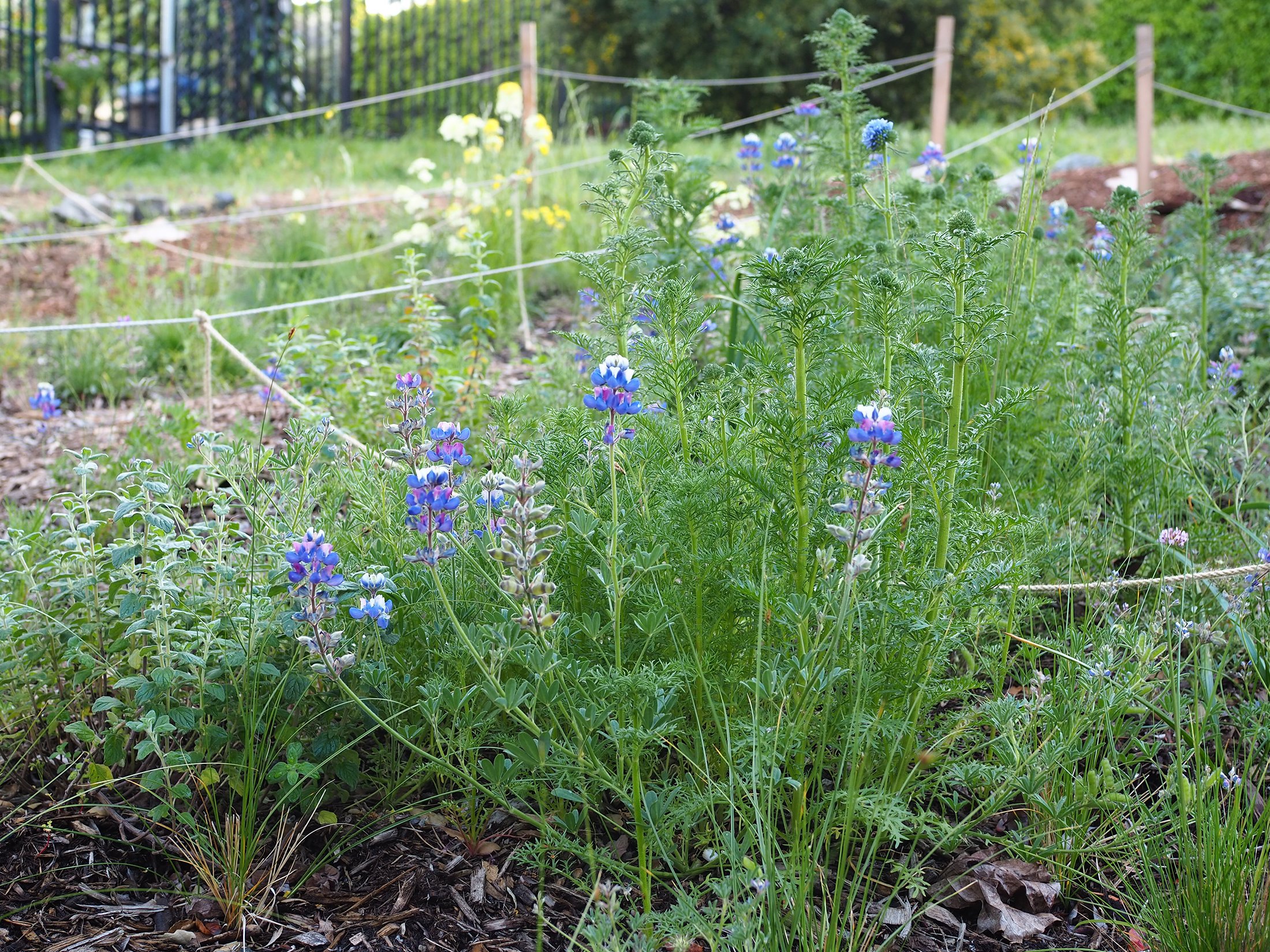
Contributor
- Topics: Growing for Biodiversity
Spring 2022
Listen to the full Garden Futurist: Episode XIV podcast here.
If you take Keystone plants out of your local food web, the food web collapses, because they are producing most of the caterpillars that run that food web. We found that just 5% of our native plant species are supporting 75% of the caterpillars that are out there.
Dr. Doug Tallamy is the T. A. Baker Professor of Agriculture in the Department of Entomology and Wildlife Ecology at the University of Delaware. He is known for highly acclaimed books including Bringing Nature Home and Nature’s Best Hope.
This interview has been edited to reflect the audio version on #Garden Futurist.
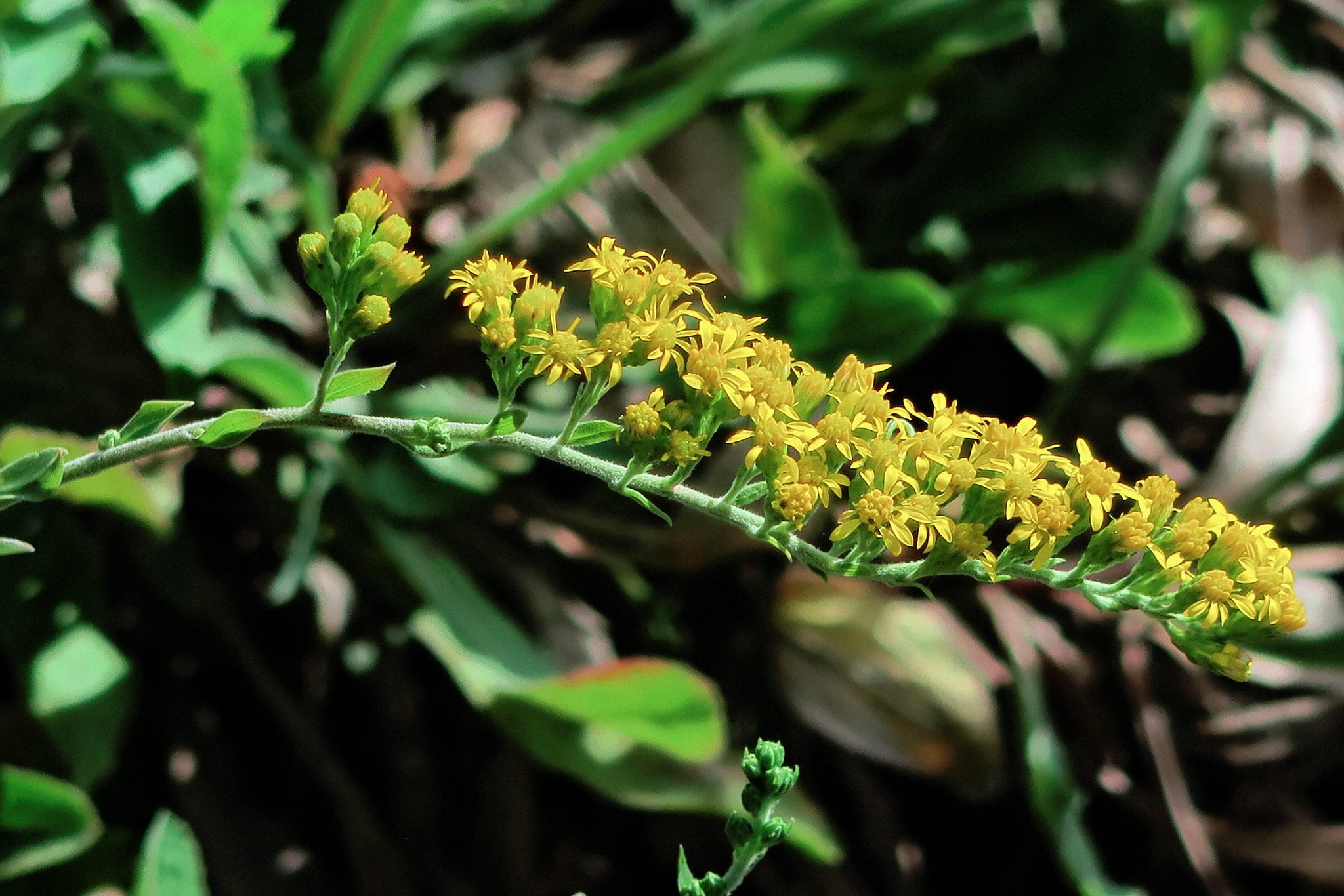
Sarah Beck: You’re listening to Garden Futurist. I’m Sarah Beck, here with Adriana López-Villalobos. Hi, Adriana.
Adriana López-Villalobos: Hi, Sarah.
Sarah Beck: Today we’re talking about selecting plants for our gardens that will be most likely to have a massive impact on supporting biodiversity.
Adriana López-Villalobos: That’s right. These are called keystone plants, and they actually make up a pretty small proportion of all native plants in our region. Our listeners might be familiar with how planting for pollinators supports your local ecosystem, but we don’t as often talk in terms of how our gardens are supporting food webs.
Sarah Beck: Food webs, now, do you mean how most animals eat a plant or ate something that ate a plant, and that something that ate a plant was likely an insect?
Adriana López-Villalobos: I like that. So basically if you remove a keystone plant, the diversity and number of many essential insects, primarily, and the things that ate those insects, like birds, will be gone.
Sarah Beck: I don’t personally think that caterpillars are delicious, but in the conversation we had with our guest today, we learned that caterpillars—in particular the larval stage of moths—have a really outsized role to play.
Adriana López-Villalobos: Our guest today is Doug Tallamy. He is the TA Baker Professor of Agriculture in the Department of Entomology and Wildlife Ecology at the University of Delaware. He’s known for highly acclaimed books, including Bringing Nature Home and Nature’s Best Hope.
Sarah Beck: Welcome, Doug. So glad to have you on Garden Futurist.
Doug Tallamy: I’m happy to be here.
Sarah Beck: So Doug, you have said that the most important cutting-edge work your team has ever done is documenting the existence of keystone plants, those species that have an outsized impact on local food webs.
Your research involves herbivores, and you aren’t talking about large grazing animals like cows. You’re talking about insects, like butterflies and moths, in the part of their life cycle, as larvae, when they munch on plants. Why is it so alarming to see biodiversity loss of plant-eating insects like butterflies and moths? Why are they so important?
Doug Tallamy: Well, let’s remember what plants do. They do lots of things, but one of their really important ecological functions is to capture energy from the sun and turn it into food through photosynthesis. Well, they’re using that food, but so are all the animals on terrestrial Earth—only if they have access to it, which means they’ve got to be able to eat the plant. So if the plant keeps all that food in its own tissues and doesn’t pass it on to animals, then we have no animals, and then we have no functional ecosystems.
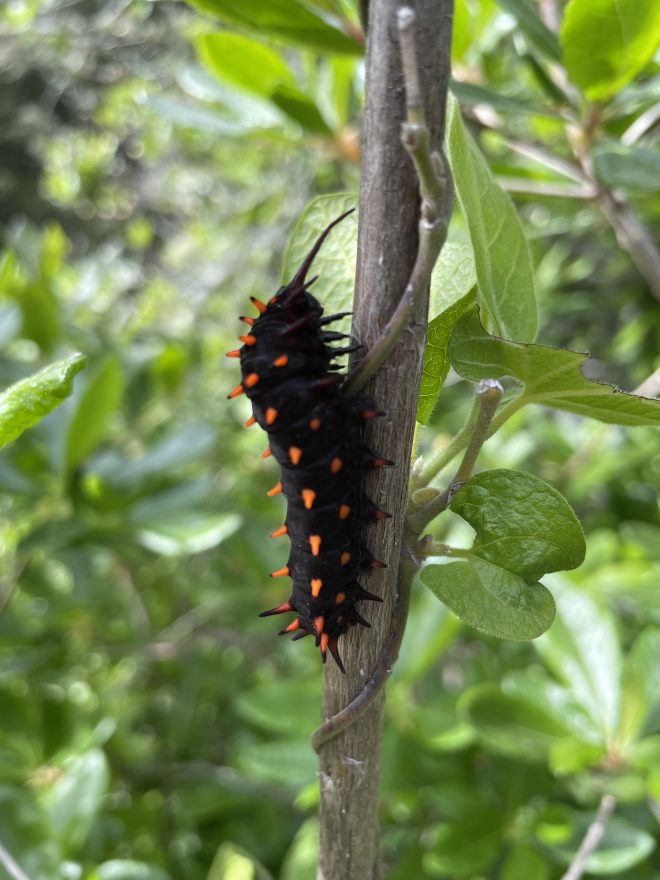
So we’re talking about plants sharing their food, and it turns out that most vertebrates don’t eat plants directly. Most vertebrates are eating something else that ate plants, which is typically an invertebrate, typically an insect. And out of all the insects, caterpillars are transferring more energy from plants to animals than any other type of plant eater, which makes caterpillars enormously important in terrestrial food webs.
So if we have plants that don’t allow caterpillars to eat them, you got a dead-end food web, and that that spells problems for all kinds of biodiversity.
Sarah Beck: Your team’s research revealed something so striking: a small percentage of the plant species within a region support the vast majority of butterfly and moth larvae. You call these hyperproductive plants “keystone.” You’re referencing the Roman arch, this is significant. We’re talking about potential collapse of an ecosystem. You meant this as a strong metaphor, right?
Doug Tallamy: The keystone is that stone in the middle of the Roman arch and if you take it out, the arch collapses. If you take keystone plants out of your local food web, the food web collapses, because they are producing most of the caterpillars that run that food web.
So we found that just 5 percent of our native plant species are supporting 75 percent of the caterpillars that are out there, 14 percent of our native plants are supporting 90 percent of the caterpillars. So if you build a food web, you can have 86 percent of our native plants and still have a failed food web. That’s why I call this the most important thing that we’ve discovered, because it’s not simply natives versus non-natives. It’s the right natives versus everything else.
Sarah Beck: Were you, up until this point, assuming or placing maybe more significance in that overall biodiversity of native plants concept? Did that shift this?
Doug Tallamy: It did. I came into it with the same approach as everybody else. It was a dichotomy. Native good, non-native not so productive.
We can just talk about contributors versus noncontributors. And everybody assumed natives are contributing more than non-natives. On average they are, but what’s really contributing the most is those keystone plants. A lot of our natives contribute very little.
Now we’re talking about passing on energy to support the food web. We can also come up with keystone plants to support pollinators. Pollinators are really not about supporting the food web. They’re about getting plants to reproduce, moving pollen from one plant to another. They’re not an important aspect of the food web itself, because most things are not eating bees and wasps and other things. Although, I will say, there are a lot of moths that are important pollinators.
Sarah Beck: Right.
Doug Tallamy: After they give up that caterpillar stage and they become moths. They’re just doing they’re pollinating at night, and we don’t appreciate them as much.
So we can easily come up with a list of plants that support the most pollinators. And really, we should focus on specialist pollinators, because if you plant for specialists—the ones that need particular species of pollen—you’re meeting the needs of the generalists as well, because they can use those plants. If you only plant for generalists—for things like honeybees, which are real generalists, and bumblebees are pretty generalized—then you’re losing all those specialists. And out of the 4,000 species of native bees we have, over a third of them are highly specialized.
So for example, if I have goldenrod (Solidago) in my yard, I can have 12 species of bees that only reproduce on the pollen of goldenrod that won’t be there if I don’t have goldenrod. And I don’t lose any generalists because they’re using goldenrod, too.
Sarah Beck: How do you frame this conversation about this small number of native plants that are more productive, these hyperproductive ones? How do you frame this in the conversation about pollinators, when we’re also talking about these butterflies and moth caterpillars? Can we come up with some sort of order of operations, as far as what holds the greatest value in terms of our actions?
Doug Tallamy: Well, we need both. We humans try to simplify everything, but we need productive plants that support both types of webs, the food webs and the pollinator webs.
And this is where the National Wildlife Federation is launching a new website called Keystone Plants for Wildlife, and they’ve got the plants that are best for the caterpillars, but they’re also having a list of plants best for specialist pollinators so that people can see there are two groups of plants.

Now some of them do both. So if you’re looking at herbaceous plants, you want the best keystone plant to support the caterpillars, again, it’s goldenrod. They support 110 species of caterpillars just in the East, and they also in the East are the top plant for a specialist pollinators. As you move a little farther west, then sunflowers take over as number one, and they produce a lot of caterpillars as well.
So a few of these plant genera do both, but when you move into the ones that make the most caterpillars, they’re typically woody plants. Oaks (Quercus), for example, they’re number one over most of the areas of the country, and they’re wind pollinated, so they’re not supporting the most pollinators.
Sarah Beck: Can we dig a little bit into the why of this before we get into the specific groups of species that we think are keystone? How do you think this happened? I’m so curious. This small number of plants having such an outsized impact. Does this have to do with this coevolution? What are the factors?
Doug Tallamy: Well, that’s the question we’re asking in an NSF grant we’re submitting. There are five or six hypotheses, and my guess is all of them are contributing to this, but:
- The age of the plant genus: if it’s a very old genus, it’s been around long enough that a lot of things could adapt to it.
- The size of it: if it’s a large genus, so it has a lot of species in it.
- If it has a broad geographic range that gives a lot of caterpillars a chance to interact with it.
- The type of chemical defense that it uses in its leaves. So a quantitative defense like tannins retard digestion but it’s not a toxin, whereas a qualitative defense is a toxin and right away, nothing can eat those except the adapted species.
So you put all those things together and it probably describes where there’s just a few genera that are supporting the most.
A pattern I recognized just the other day, believe it or not, is that if you look at the top keystone plants for caterpillars, all but one genus are wind pollinated.
Sarah Beck: Wow.
Doug Tallamy: So what does that mean? It means that they’ve got to grow in groups. They’ve got to grow in high densities, or the wind pollination won’t work. It makes them very apparent. So they’re big targets when they’re growing in high-density populations. Which one of those is going to end up being most important? I will tell you if we get this grant and five years later.
Sarah Beck: Wow. This is interesting, though. What you’re saying is one of the big factors could be the physicality of some of these plants.
Doug Tallamy: Think of an oak tree that lives 900 years and compare it to a spring beauty (Claytonia) that’s around for two weeks. One’s more apparent than the other.
Sarah Beck: Can you tell us a little bit about the specific plant species that especially gardeners in our Pacific region might be interested in focusing on? And again, we love pollinators, but we also love caterpillars, so what would you say for a Pacific region gardener to think about?
Doug Tallamy: When you’re talking about what is the best plant, of course you can’t abandon the concept of “right plant, right place.” But if you understand how to find the right plant for the type of soil and your exposure and degree of wetness and everything else—moisture, I should say—there definitely are plants that are better performers.

In the West, it’s interesting. So oaks are way up there at the top, but so are willows (Salix), and so are aspens and cottonwood (Populus), and so are alders (Alnus). And a lot of people say, “Well, they’re riparian species, they’re all growing along streams.” And I say, “That’s right, they are. That’s what biodiversity likes. It likes water.”
When it comes to pollinators, lupines (Lupinus), they’re one of those groups that are supporting both. They support a lot of caterpillars and pollinators. Sunflowers (Helianthus), I think there’s 75 species of bees in California alone that depend on sunflowers. Sagebrush (Artemisia) is very high. Eriogonum, buckwheats, very high as well. Genus of bushes, Ceanothus, like California lilac, another very important plant.
And some of these, your asters (Asteraceae), these are pretty plants that can easily be used aesthetically in suburban yards, and you’re meeting the needs of an awful lot of both caterpillars and pollinators.
Sarah Beck: So how would those ideas apply to maybe slightly larger landscapes in urban environments or suburban environments? I keep thinking about what you said about the footprint of the plant. When I think about clusters, it might make sense for those of us who live near a civic space that could have beneficial plants or plants that are these keystone species. Are there ways to think about it that way?
Doug Tallamy: Yeah, of course everybody, when they think of oaks, they say, “Well, you need a big space.” And for many of the species you do, although there have got to be 15 species in the West that are small.
Sarah Beck: Right.
Doug Tallamy: Some are actually groundcovers. So it’s not necessarily true. You’ve got an oak in California called the Palmer oak (Quercus palmeri), which is essentially a groundcover, and it creeps along the ground, and it lives here and then it dies there and moves over a little bit. They’re ancient plants, 13,000 years old, a single plant. A lot of people love great old, great-aged plants and the Palmer oak would be way up there, one of the oldest plants in the entire world.

Planting in groves is a wonderful way to use oaks if you’ve got the space. So Oregon oak (Quercus garryana) loves to do that. And it also stabilizes these plants because the roots interlock, which means you get Santa Ana winds or some atmospheric river coming in off the ocean, you don’t blow them over, even when the soil gets drenched, but isolated trees do get blown over because they can’t interlock their roots with anything. So if you have the space, clumping trees far closer than you would normally think is actually what we’re thinking about for future gardening.
We need people to appreciate the ecological value of plants and the fact that not all plants are equal in their ecological values. Oaks are the best carbon sequesters, they’re the best watershed managers, they’re the best biodiversity supporters. The only thing they don’t do better than other plants is support pollinators.
But those are the four things that have to happen in every landscape. And if you get one plant that could do three out of four, we need to celebrate that plant. Can’t talk about them too much because we’re losing our oaks. I mentioned the Oregon oak, it’s already gone from 97 percent of its range. And we also have introduced a lot of oak diseases. Sudden oak death syndrome (Phytophthora ramorum), bacteria leaf scorch (Xylella fastidiosa), oak wilt (Bretziella fagacearum). They’re taking a terrible toll. How are we going to get past these? We’ve got to find resistance in the populations.
And I hear a lot of people say, “Well, we’ll just stop planting oaks.” Now, that’s not an option. What we have to do is plant more oaks than ever and see which ones don’t die, because those will be the resistant ones. It’s not going to be a big percentage of them, but that’s what we have to discover and get them into the landscape as soon as possible.
So these are all good reasons to focus on oaks, even if we’ve talked about them in the past.
Sarah Beck: And if you are an individual gardener in your own plot of land and that’s just a yard, even if we can’t plant a whole grove, even an individual Quercus may be of benefit?
Doug Tallamy: Absolutely. And if you say, “Well, in 200 years, this oak is going to be too big for this space,” maybe. But you got 200 years of good ecological productivity in the meantime. I’ve got pictures of seedling first-year pin oaks (Quercus palustris) coming up right through the leaves, with caterpillars standing on the ground, eating the leaves of those plants.
They start to support the food web immediately. So even if you don’t have a giant space, you could plant an oak, plant it as an acorn, you could easily have it for 25 years before it even begins to become too big for the space. And you’ve had 25 years of a very productive plant.
Sarah Beck: That’s a really interesting view, and I think that’s helpful for a gardener to think differently about their relationship to a plant. In a way, they are gardening with a tree.
Doug Tallamy: Yes. Yes. In the past we’ve thought our plants are just decorations. So we’ve only picked plants with that in mind. So we still want to have beautiful landscapes, but we want them to be ecologically functional, too. And that’s a new goal for gardeners. It’s an interesting goal. It’s a rewarding goal, because you can see the results. So how do we garden cleverly to increase ecosystem function right where we live?
Sarah Beck: Let’s expand on that just a little bit, if you would. I’m very curious about this shift, especially from the idea that I think a lot of us held, that just, “More biodiversity, greater biodiversity. I’m planting native or endemic plants.” How do we think about shifting this mindset as gardeners?
I’m sure people are going to be overwhelmed, because anytime we see cutting-edge research, it’s like, “How does this translate to me as an individual?” What would you recommend to someone who’s thinking, “Okay, I want to do all these different things with my garden. I want to support as much biodiversity as I can.” Is there a way to think about that?
Doug Tallamy: Yes, but it is another layer of complexity. I think of the keystone plants in our landscapes as the two-by-fours holding up our ecological house that we’re building. They’re an essential part of it. So we get those in place, then we can fill in the rest of the house around it. In the past, we’ve been trying to build an ecological house out of wallpaper and that doesn’t work. Then the house essentially falls down.
So once we get our keystone plants in place, then we want to work on diversity, absolutely. But remember, a typical suburban yard is not nearly big enough to hold all the diversity that’s around them.
So again, another positive way to think about it is to look at where you live. You’re part of a puzzle, part of a matrix within your neighborhood. But your entire neighborhood is going to come together to make that entire puzzle.
So, if you have more sun than somebody else, then maybe you should focus on those pollinator plants. Maybe you already have a big oak tree. Does that mean you’re through? Well, there’s other things you can do, but your neighbor is next to you and then another neighbor next to them.
So it’s the entire geographic area that needs to accomplish all those ecological goals. It’s hard to do it on one small plot. So don’t be frustrated if you can’t get 500 species of plants on your property.
Sarah Beck: Sure, and this is that patchwork concept. And I think this is very appealing, especially for urban folks, that feeling of contributing when you only have a small piece.
Doug Tallamy: Right. That’s so important, I’m glad you brought that up because we do have a global biodiversity crisis. We’ve got global insect decline. In North America, we’ve lost 3 billion breeding birds in the last 50 years.
So it’s a global crisis, but it does have a grassroots solution. And that means everybody can contribute to this. That makes everybody a conservationist. Everybody is part of the solution to conservation. If you own property, it’s obvious that that’s where you’re going to start. You’re going to improve the ecological value of that piece of the Earth.
If you don’t own property, help somebody who does—82 percent of us live in cities, and a lot of us don’t live in the prime places to support biodiversity. We can improve our cities a lot, but they all have parks, they have preserves, they are all underfunded, they all need volunteers. So you can help.
And even if you’re 104 years old and you’re just not getting out of your chair anymore, you can help by the way you vote, because it’s our policymakers that are having the biggest impact on all of these issues. And we put them in into office. So let’s be thoughtful about who we’re voting for.
Environmental issues are important because nature is not optional. There’s fascinating research about the health benefits. You spend 15 minutes just looking at a tree and your blood pressure drops. Your stress hormone decreases, your attention span increases, really crazy things. You heal better.
You know what it is? When you reduce stress, we do everything better, and being associated with nature in some regard reduces stress and it really doesn’t take much. By nature, usually all these experiments are just by exposing people to plants. When you throw in birds and butterflies and everything else, it makes you feel good. This is why we like visiting natural areas.
So there are real health benefits, and it is enormously entertaining. Our national parks were preserved because they were beautiful place that we could visit. The word ecology hadn’t even been invented yet. So it wasn’t because they were producing services that we need, they were preserved for entertainment value, because they were so enormously entertaining. But you put all them together, it’s only 12 percent of the country. We need to convert a lot more of the country into pleasing, functional places. And we can do it.
Sarah Beck: We can do it.
Doug Tallamy: You’re in the worst drought in the last 13,000 years. So it’s not trivial.
Sarah Beck: You’re not helping me feel better.
Doug Tallamy: No, but it’s a good reason not to plant a plant that needs to be irrigated.
Sarah Beck: Right, right.
Doug Tallamy: These are simple steps we can take.
Sarah Beck: Yeah, no, absolutely.
Doug Tallamy: I’m getting old. We’re actually winding it down slowly here.
Sarah Beck: Oh goodness.
Doug Tallamy: If we can do what I just talked about today, I will be very happy.

Sarah Beck: Adriana, I loved that comparison that Doug gave between the big oak tree and the tiny, ephemeral wildflower. I think as people who love plants, we tend to value so many plants, but Doug has asked us to play favorites and he has asked us to favor those big keystone contributors.
Adriana López-Villalobos: Yeah, and I’m glad he mentioned two of my favorites, goldenrod and oaks. Actually, I wasn’t aware how much biodiversity these two can support. So I think the easiest takeaway for the gardener is now that we have all these resources, we can look at the keystone species that might fit the conditions that we are in, and then adding a few of these to our garden can have a large impact.
Sarah Beck: It’s so exciting to think that we can have that much impact by planting just a few species of plants and making that addition to our gardens, even if you have a small space.
You can check out some of these resources that Doug and the National Wildlife Federation have provided, which we’ll share with you in the transcript and the accompanying article on www.pacifichorticulture.org.
You will find–oh, this is exciting, Adriana and I just downloaded our own lists from the National Wildlife Federation, and you can get a keystone native plant list for all the Pacific ecoregions, and the website actually has all of the US, Canada, and Mexico. I’m really nerding out on this, I’m going to go do this right now.
Resources
The National Wildlife Federation (NWF) offers several resources for keystone plants, such as a native plant finder.
NWF also runs Garden for Wildlife, which provides keystone native plant lists for Mediterranean California [pdf], Marine West Coast Forest [pdf], and North American Deserts [pdf].
In addition to his work at the University of Delaware, Doug Tallamy provides educational outreach through the website Homegrown National Park.
His books include:
Tallamy, Douglas W. 2009. Bringing Nature Home: How You Can Sustain Wildlife with Native Plants. Portland, OR: Timber Press.
Tallamy, Douglas W. 2020. Nature’s Best Hope: A New Approach to Conservation That Starts in Your Yard. Portland, OR: Timber Press.
Share:
Social Media
Garden Futurist Podcast
Most Popular
Videos
Topics
Related Posts
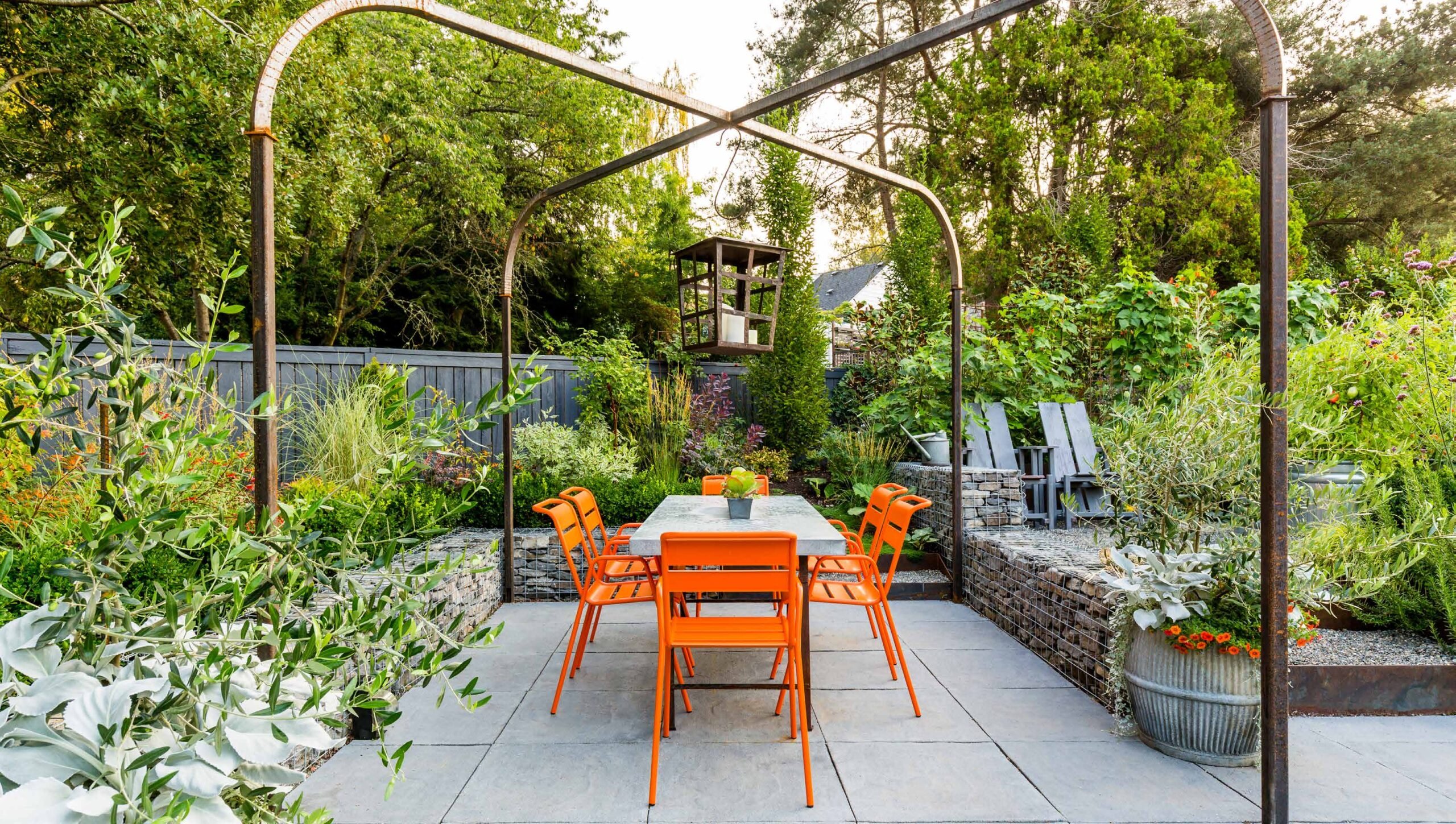
Design Futurist Award Announced: Committee Shares Vision
March 8, 2023 At Pacific Horticulture, we believe that beauty can be defined not only by gorgeous plants and design, but also by how gardens
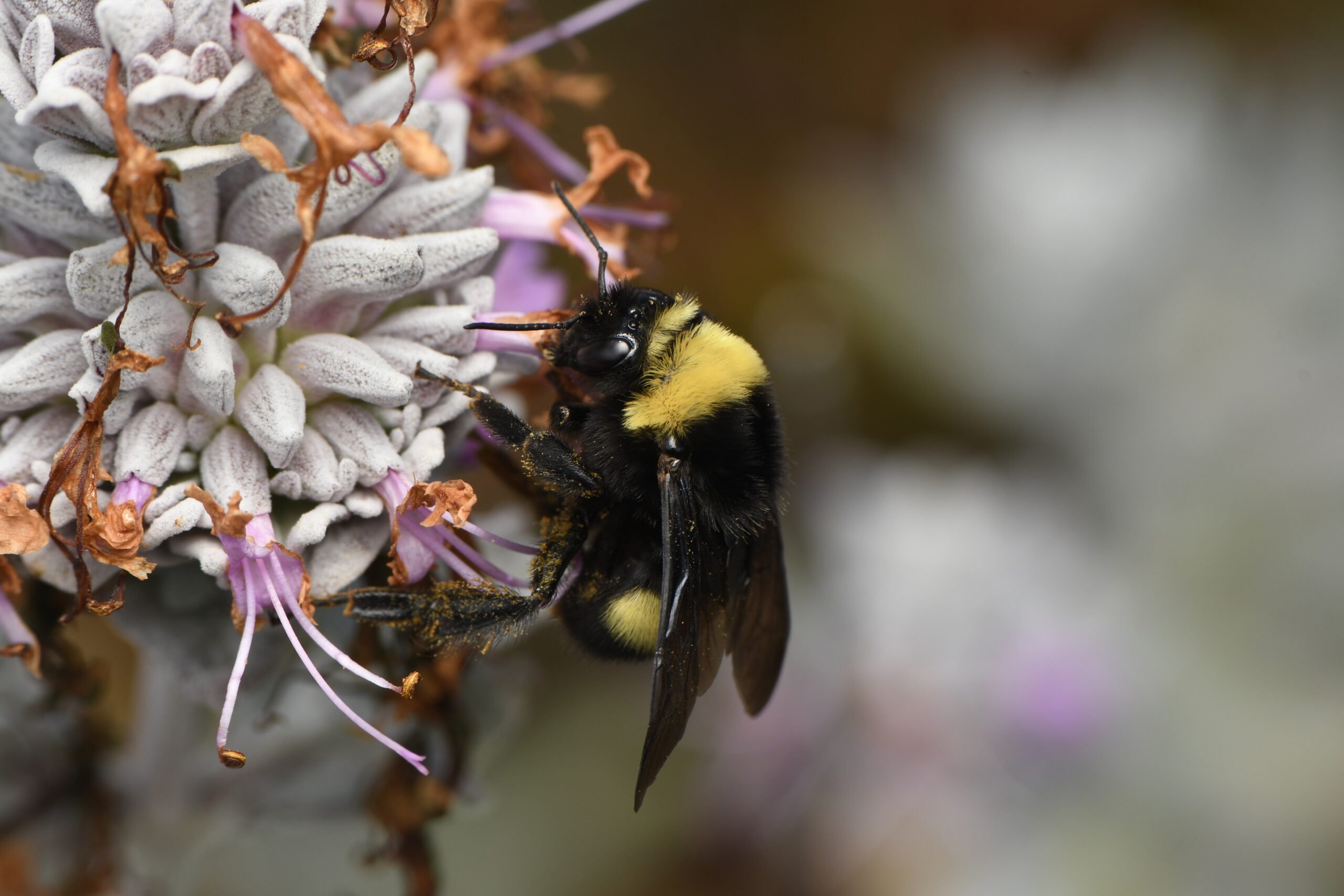
Native Bees and Your Garden
Winter/Spring 2023 The native bees in and around our gardens face ever-increasing environmental pressures as they carry out their pollination duties. More than a quarter
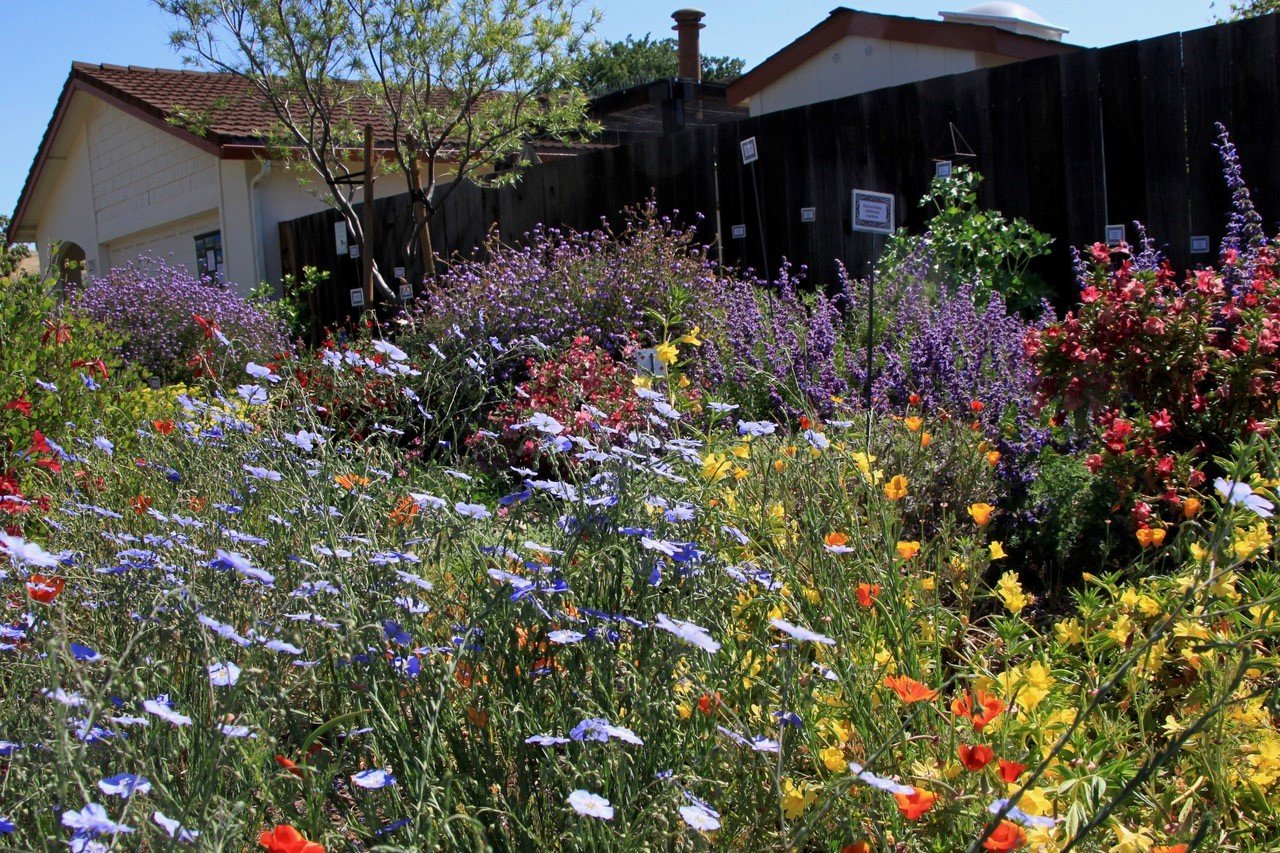
Voices of the West; New Science on Life in the Garden
Did you know that oaks can harbor over 800 species of insects? That includes only those feeding directly on oak, where they feed on every
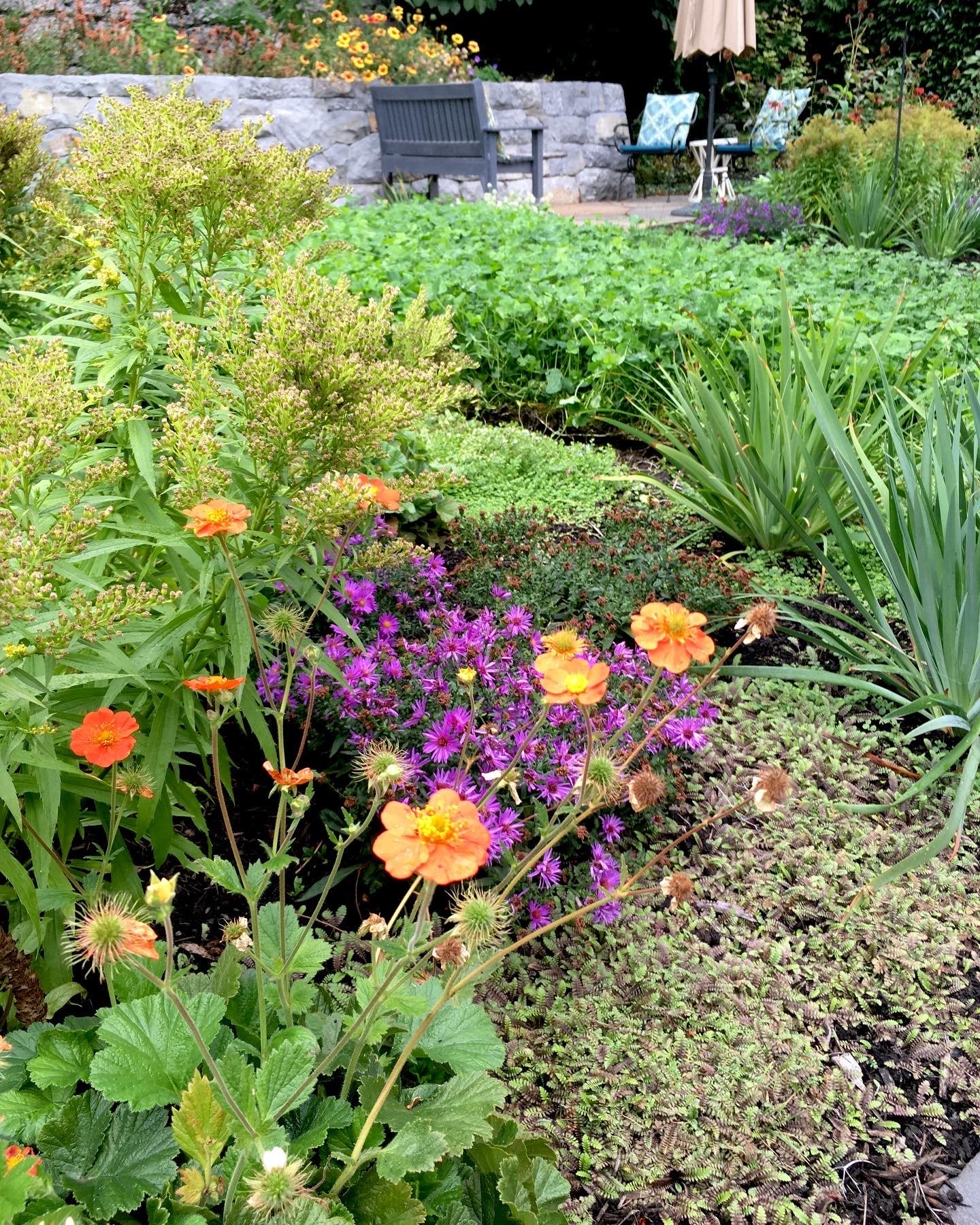
Nature Therapy from the Contemplative Garden
Winter 2022 Women’s hushed morning voices mingled with crashing waves and chattering crows. “The kettle’s still hot.” “Can you pass the honey?” Whoosh, crash, caw,









Responses